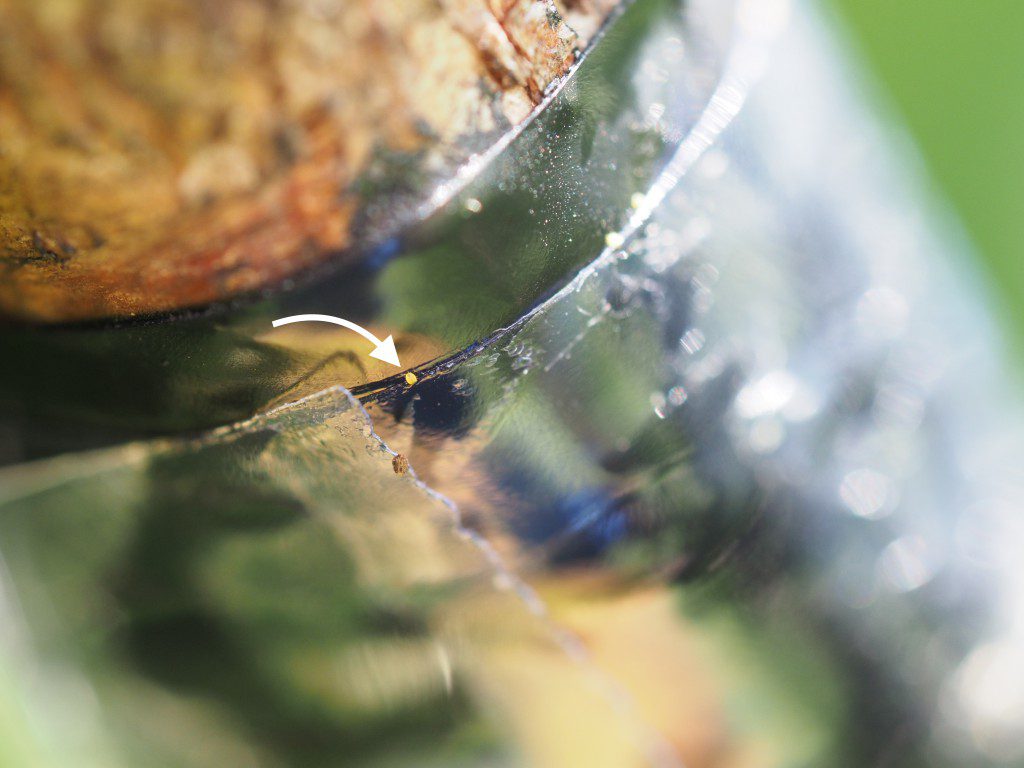San Jose scale crawlers are beginning to pick back up. Following the degree day (DD) timing starting at February 1st using a base of 51oF and a max of 90oF, at this point last year we had accumulated 1,884 DD and this year we are at 1,828 DD, so we are not too far off from last year’s timing (UGA Weather). I anticipate the second main peak of crawler activity to occur at approximately 2,400 DD since Feb. 1, which will be in roughly two weeks in Fort Valley with the current weather. And for the Ridge, (Clarks Hill, SC is at 1,605 DD) I’d expect the peak to be in about 3-4 weeks from now, and then the upstate a week or so after that.

Blocks with fruit
If you have blocks where you have had a history of San Jose scale issues and still have fruit this season, with the overlap of San Jose scale and PC activity, there is an opportunity to synergize management efforts for these pests. Please note the PHI for the listed chemicals.
In blocks with fruit on the trees, a combination of Imidan (3.5-4 lb; PHI=14 day) with Esteem (6 oz; PHI=14 days) or Centaur (34.5 oz; PHI=14 day) is likely our best (albeit expensive) option, with high efficacy for both PC and scale. Alternatively, another effective option is to tank mix Esteem or Centaur with either Belay (6 fl oz; PHI=21 days), Actara (4.5-5.5 oz; PHI=14 days), or Avaunt (5-6 oz; PHI=14 days). I cannot recommend mixing scale chemistries with a pyrethroid at this time, as the pyrethroids will have a larger negative impact on our natural enemy communities that may provide some natural control of San Jose scales.
Blocks without fruit
Unfortunately, even blocks without fruit are vulnerable to San Jose scale, which is especially frustrating in a year like this. However, in terms of scale-only management Esteem or Centaur alone are good options, or Venerate XC (2 qt applied twice over 7 day period; 4 qt total; PHI=0 days), which is most effective when targeting peak crawler emergence, an alternative option.
Lastly, in blocks if there is no harvestable fruit, consider applying 2% summer oil in at least 200 gallons of water/acre. When applied with Captan there is the risk of phytotoxicity, but the risk is lowered when there is no fruit.
Please note that that while crawlers seem to be active all season long, there will be a third peak of activity in early August. That may be another option for a knocking the scale population back prior to our normal dormant management options.
As always, please check out the management guide for more detailed recommendations. And don’t hesitate to let me know if you have any questions.
Last thing, if you are bored and want to learn a bit more about, check out the UGA circular about San Jose scale.
Take care, everyone!